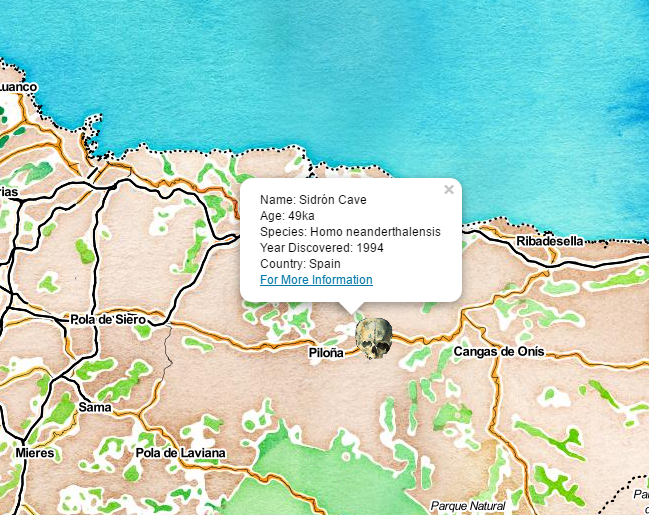In 1994, Neanderthal remains were inadvertently uncovered inside the cave. Archaeologists have since recovered the remains of at least 12 individuals: three men, three adolescent boys, three women, and three infants. Neanderthal ancient mtDNA was partially sequenced in HVR region for three distinct Neanderthals from El Sidrón cave (441, 1253, and 1351c). 1253 and 1351c have the same mutations at position A-911, G-977 in exon 7 of FOXP2 gene, known as the "language gene", as present-day people. The first sequencing of the Neanderthal Y chromosome was successfully completed from a specimen from Sidrón Cave. Based on this sample, researchers estimate that Neanderthals diverged from humans around 590,000 years ago. The Sidrón Cave Y chromosome has never been identified before and is not found in modern humans. The Sidrón Cave Y chromosome coded for several minor histocompatibility antigen genes that differed from humans.
